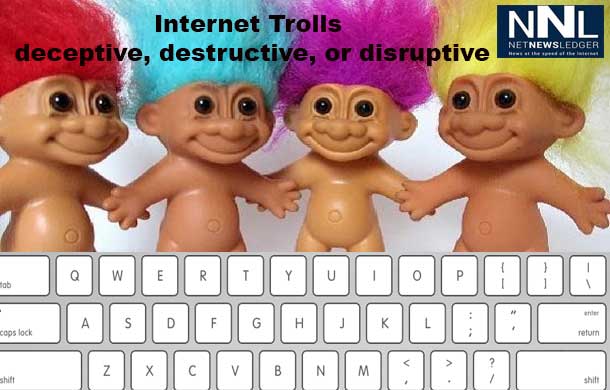Thunder Bay – TECH LIVING – Over the course of the COVID-19 pandemic, the amount of time many people are spending online has increased.
In many cases, our worlds shrank to the size of the screen on a smartphone, tablet, iPad, or computer monitor.
What is a Troll? Wikipedia says, “…a person who posts inflammatory, insincere, digressive, extraneous, or off-topic messages in an online community (such as a newsgroup, forum, chat room, or blog), with the intent of provoking readers into displaying emotional responses, or manipulating others’ perception.”
As well, many have been spending a lot of time staring at those screens.
This has been a double-edged sword.
Having communications with family and friends has helped many. However it has also exposed many people to online cyber attacks and given online trolls the opportunity to attack people.
Over the past decade there are some serious differences between how people interact online. Teens today have grown up online, smartphones and cameras are as much a part of their lives as anything.
It can be seen in how youth will, without a thought record and post fights online.
It is also seen in people cyberstalking and harassing people online.
Internet trolls often hit social media, the comments section of websites, and even private messages online. They can be very harmful to the well-being of your personal mental health, or the mental health of your children and family members too.
With added time online, and many teens spending seemingly endless hours online, the dangers are there.
Erin E. Buckels, Paul D. Trapnell and Delroy L. Paulhus from the University of Manitoba in a ground-breaking study of Internet Trolls states, “Online trolling is the practice of behaving in a deceptive, destructive, or disruptive manner in a social setting on the Internet with no apparent instrumental purpose. From a lay-perspective, Internet trolls share many characteristics of the classic Joker villain: a modern variant of the Trickster archetype from ancient folklore (Hyde, 1998).
“Much like the Joker, trolls operate as agents of chaos on the Internet, exploiting ‘‘hot-button issues’’ to make users appear overly emotional or foolish in some manner. If an unfortunate person falls into their trap, trolling intensifies for further, merciless amusement.
This is why novice Internet users are routinely admonished, ‘Do not feed the trolls!’.”
Often an Internet troll appears to gain pleasure from inflicting cyber pain on others. Frequently the ‘troll’ doesn’t have to know the person they are harming. This is a contrast to cyber bullying where the victim is often known to their attacker.
Some trolls hide behind the mantle of “truth” with the idea that they and they alone are somehow the only people out there who are capable of telling the truth. Those are the social media comment trolls in many cases.
Internet Trolls Sadistic
The research found that “Overall, strong positive associations emerged among online commenting frequency, trolling enjoyment, and troll identity, pointing to a common construct underlying the measures. Both studies revealed similar patterns of relations between trolling and the Dark Tetrad of personality: trolling correlated positively with sadism, psychopathy, and Machiavellianism, using both enjoyment ratings and identity scores. Of all personality measures, sadism showed the most robust associations with trolling and, importantly, the relationship was specific to trolling behavior. Enjoyment of other online activities, such as chatting and debating, was unrelated to sadism. Thus cyber-trolling appears to be an Internet manifestation of everyday sadism”.
Spotting a Troll
Often the troll is going to be stating and supported by commentary that their views and their statements are “What everyone is saying and no one has the courage to say”. In some cases, the troll appears to be seeking to gain some form of increased social standing by inflicting their message on others.
Trolling and Cyberbullying
The Royal Canadian Mounted Police state: “Cyberbullying involves the use of communication technologies such as the Internet, social networking sites, websites, email, text messaging and instant messaging to repeatedly intimidate or harass others.
Cyberbullying includes:
- Sending mean or threatening emails or text/instant messages.
- Posting embarrassing photos of someone online.
- Creating a website to make fun of others.
- Pretending to be someone by using their name.
- Tricking someone into revealing personal or embarrassing information and sending it to others.
- Cyberbullying affects victims in different ways than traditional bullying. It can follow a victim everywhere 24 hours a day, 7 days a week, from school to the mall and all the way into the comfort of their home – usually safe from traditional forms of bullying.
Defining the issue is the first step. Solving the issue is going to take a lot more effort. Parents, educators, police, and legislation are all going to have to co-ordinate to make this a problem that goes away.
Trolling is an issue online as well, but not the same as cyberbullying.





